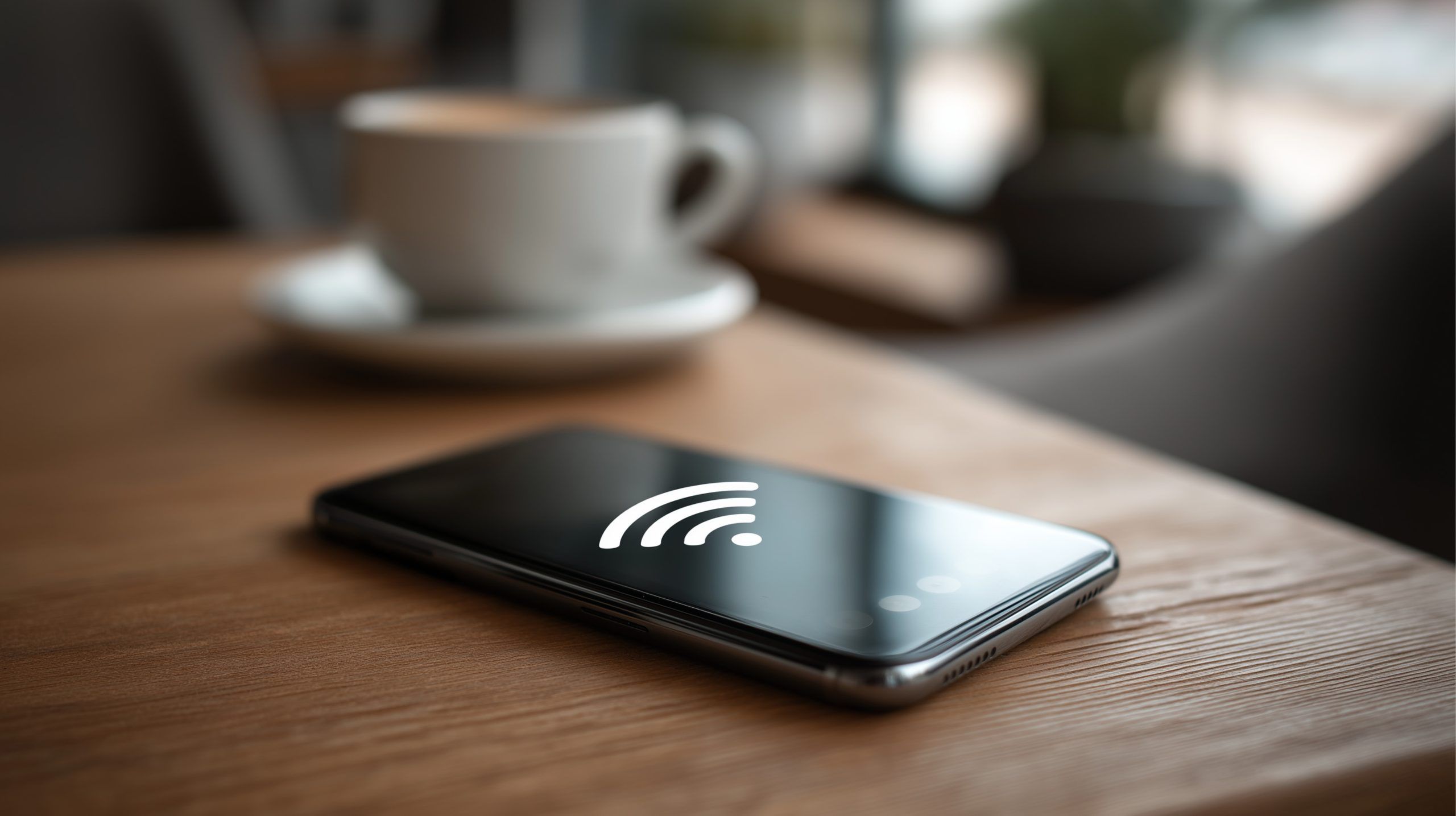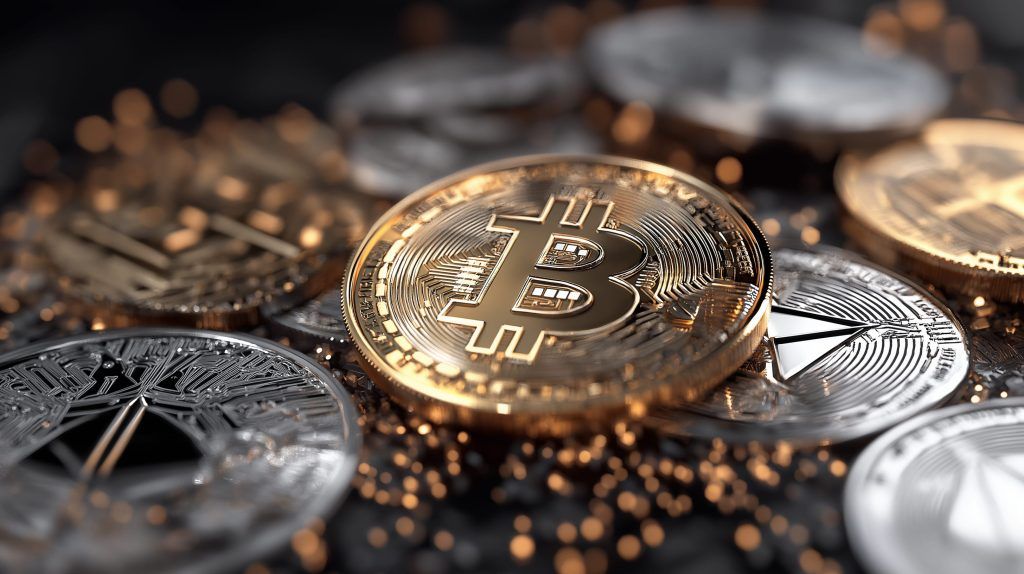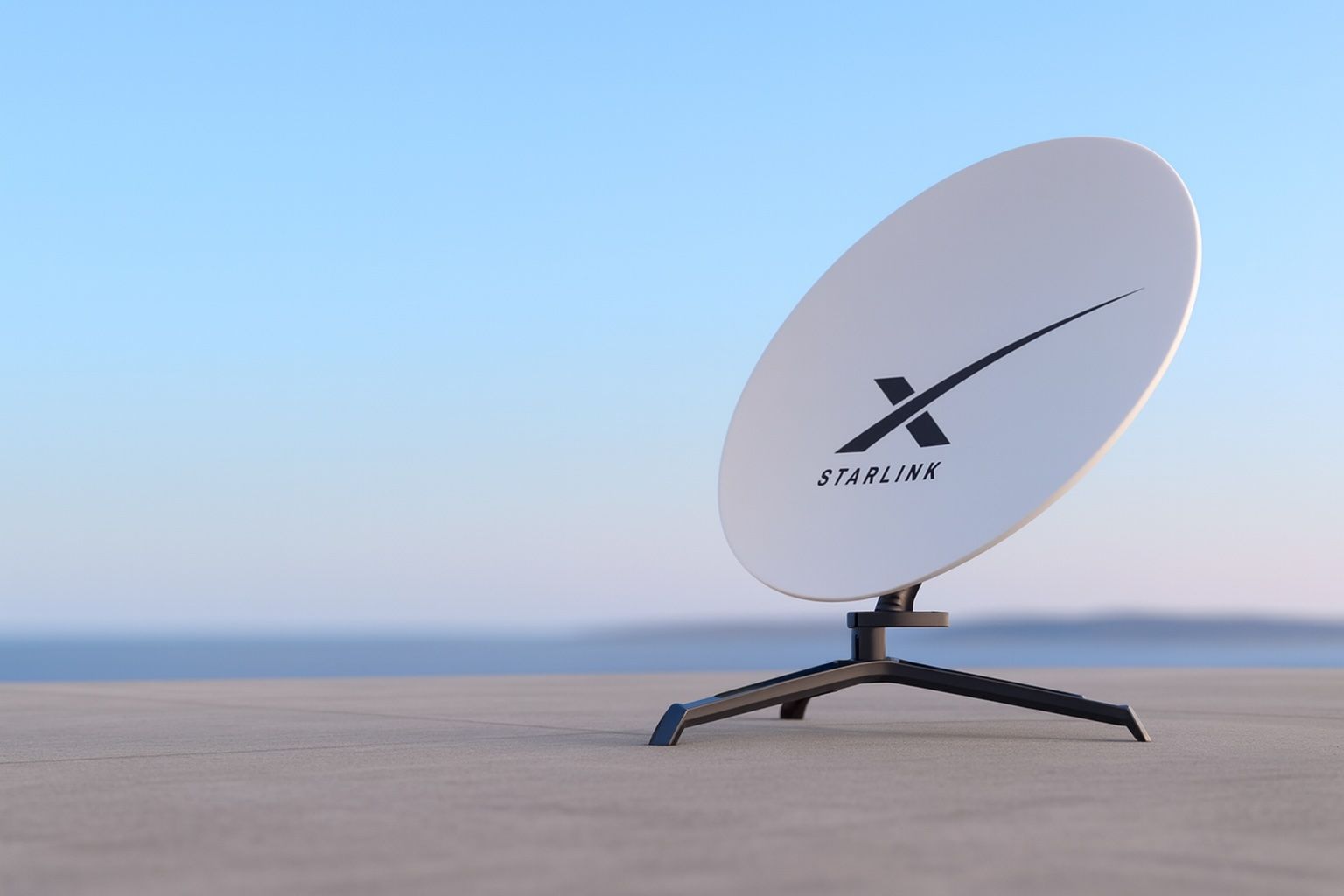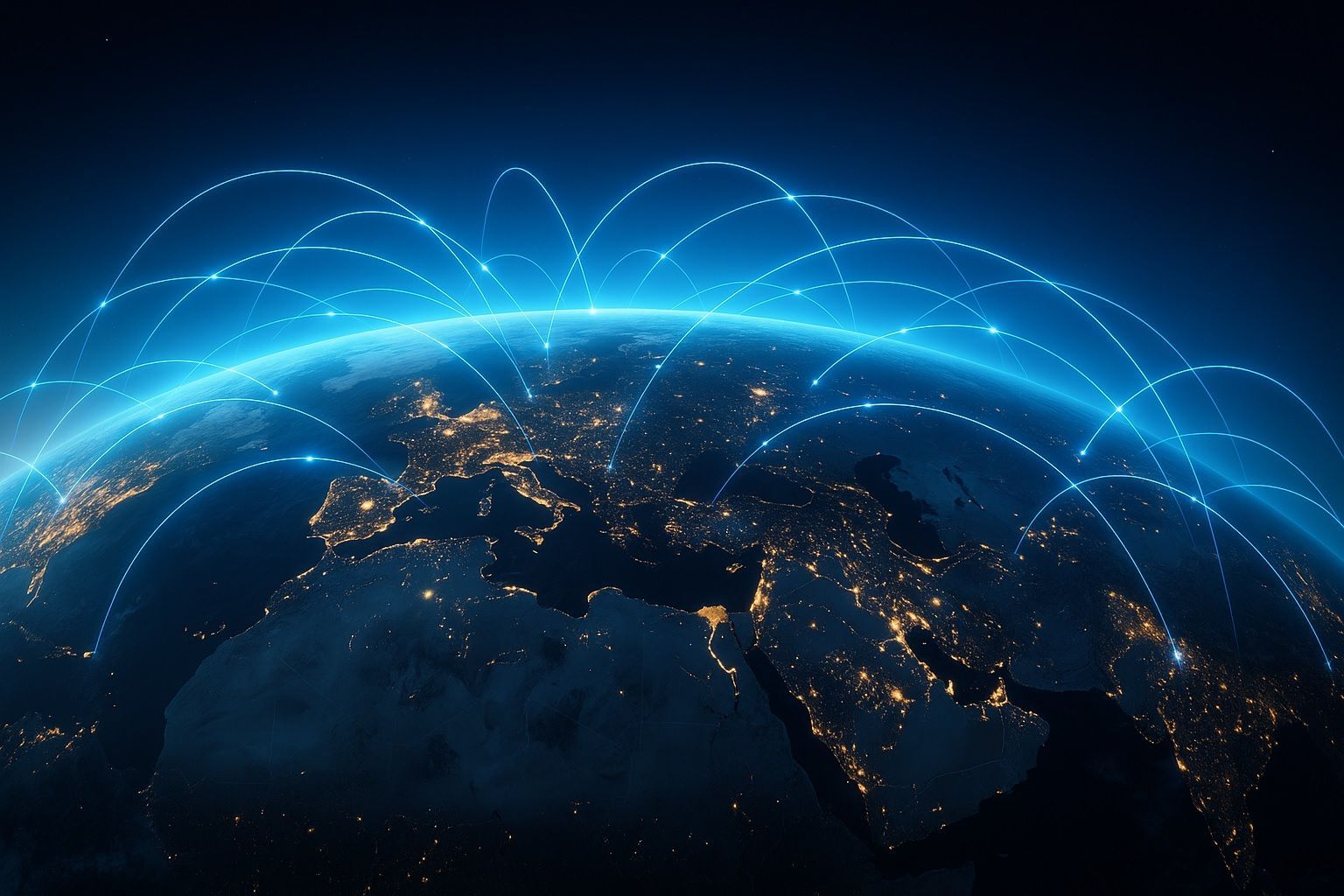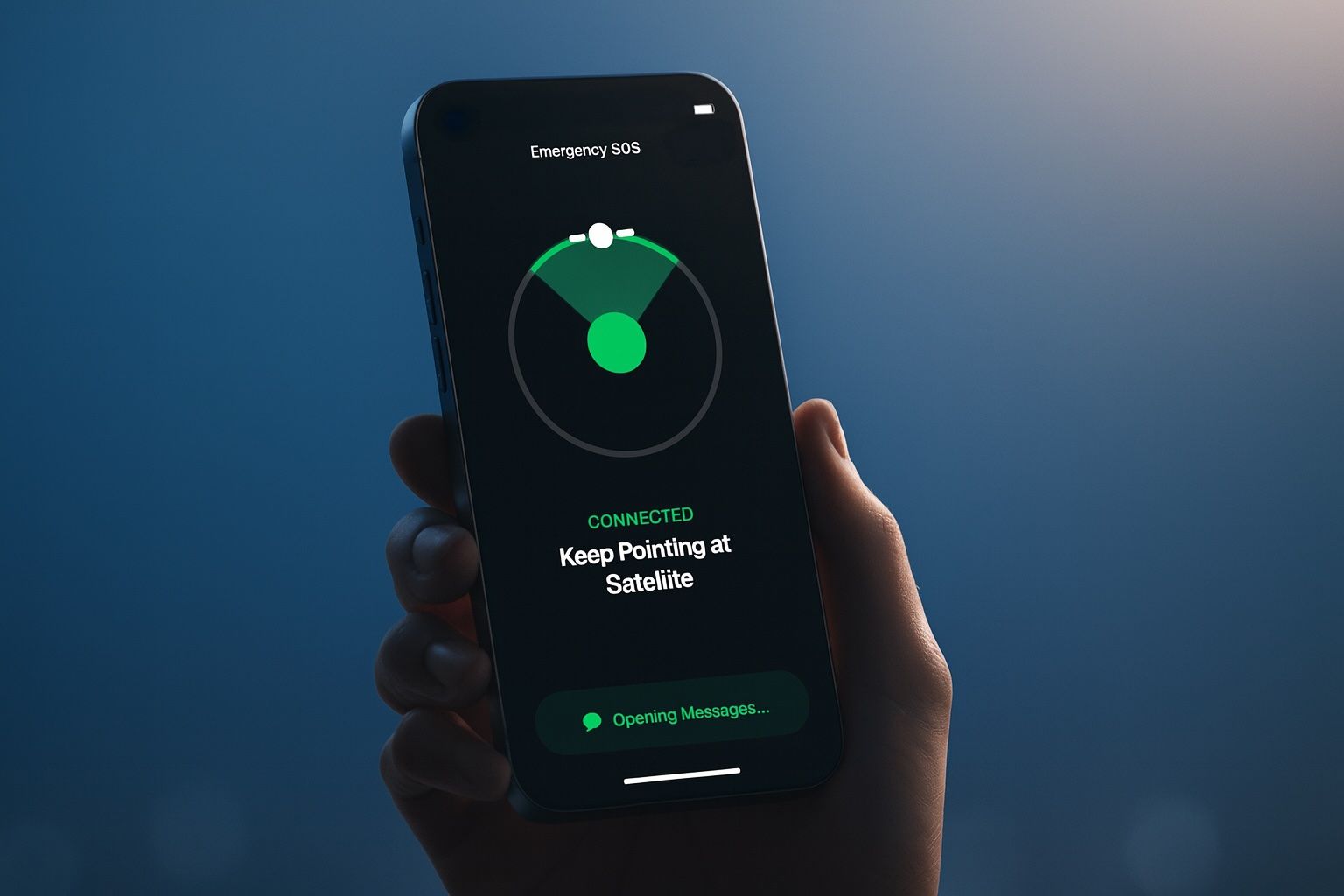- Massive Outages Rock Millions: A nationwide Verizon wireless outage on Aug. 30 left mobile users across the U.S. with phones stuck in emergency “SOS only” mode for hours [1]. DownDetector reports peaked above 23,000 as Verizon scrambled to fix a software glitch, restoring service by that night [2]. In Pakistan, authorities extended a province-wide mobile internet blackout in restive Balochistan beyond its Aug. 31 deadline, keeping ~15 million people offline amid a military offensive [3]. And in Iraq, the government imposed daily nationwide internet shutdowns from 6–8 AM during high school exams to curb cheating, disrupting morning connectivity for students and businesses alike [4].
- Authoritarian Censorship Surges:Russia enacted sweeping new internet controls on Sept. 1, fining citizens up to 5,000 roubles for searching banned “extremist” content (from opposition groups to pro-LGBT material) [5]. A new law even punishes VPN-aided searches and bans advertising of VPN services, in what critics call a bid “to create fear… and raise self-censorship” [6] [7]. Moscow also ordered all new smartphones to pre-install a state-run messenger app and hinted at banning WhatsApp as it’s owned by “extremist” Meta [8].
- Satellite & Fiber Infrastructure Expands:SpaceX launched 24 new Starlink satellites on Aug. 29 – its fourth launch in a month – bolstering broadband coverage in high latitudes like Alaska and Scandinavia [9]. Amazon’s rival Project Kuiper is accelerating too, with another launch slated for Sept. 25 and plans to begin beta satellite internet service by late 2025 [10]. In Africa, Kenya’s Safaricom (with Meta) unveiled “Daraja,” a 4,100 km undersea fiber cable linking Kenya to Oman to cut costs and improve East African bandwidth [11]. Further north, Djibouti Telecom will extend its DARE1 submarine cable down to Tanzania, Mozambique, Madagascar and South Africa by 2028, boosting resiliency from the Horn to the continent’s southern tip [12]. The U.S. is also tightening undersea cable security – the FCC moved to ban Chinese equipment on new U.S.-linked cables and streamline permits for “trusted” operators, amid warnings that adversaries could threaten critical internet arteries [13] [14].
- 5G and Broadband Initiatives Gain Steam: After years of delays, Pakistan set December 2025 for its first 5G spectrum auction, offering 606 MHz across mid-band frequencies to jump-start next-gen mobile service [15]. Likewise, Turkey scheduled its inaugural 5G auction for Oct. 16, 2025, aiming to launch commercial 5G by April 2026 [16]. In India, Reliance Jio and Meta announced a $100 million joint venture to develop AI-powered digital services on Jio’s network – leveraging Meta’s LLaMA AI models to drive new enterprise tools [17] [18]. To prevent a digital divide as networks upgrade, South Africa’s MTN is selling 4G smartphones for just 99 rand (~$5) to 1.2 million low-income users still on 2G/3G before those legacy networks shut down in 2027 [19] [20]. “As the country transitions to 4G and 5G, it is vital we connect as many South Africans as possible,” said MTN South Africa CEO Charles Molapisi, vowing “no one is left behind in the digital era.” [21]
- Bridging the Global Digital Divide: A new U.N. ITU report warns ~2.6 billion people (one-third of humanity) remain offline, and achieving universal connectivity by 2030 will require an estimated $2.6–2.8 trillion investment [22]. The ITU calls internet access an urgent priority for education, jobs and vital services – “an investment in human potential, not just a cost” [23]. So far, its Partner2Connect coalition has secured $51 billion in pledges toward connectivity projects (just over half of a $100 billion target by 2026) [24]. On the ground, innovative programs are targeting underserved communities: the Internet Society Foundation just funded nine community-led networks across Africa, Latin America and Asia – from indigenous women building local mesh networks in the Amazon to solar-powered Wi-Fi hubs in rural Senegal and community broadband in Uganda [25]. Major carriers are pitching in as well, from MTN’s ultra-low-cost smartphones to city initiatives like New York’s free Liberty Link Wi-Fi for public housing. All these efforts underscore a growing global resolve to “connect as many people as possible” and ensure the next era of internet expansion leaves no one behind [26].
Infrastructure and Satellite Expansions
Over the past 48 hours, major investments in physical internet infrastructure were unveiled worldwide. SpaceX capped a busy summer of launches with yet another batch of 24 Starlink broadband satellites lifted into orbit on August 29 [27]. This marked SpaceX’s fourth Starlink launch in a month, expanding its constellation (now over 8,000 active satellites) and improving coverage in high-latitude regions like Alaska, Canada and Scandinavia [28]. With this growth, Starlink continues to deliver high-speed internet to remote areas in dozens of countries. And it’s not alone – Amazon’s Project Kuiper, a rival low-Earth orbit satellite network, is accelerating its deployment. Amazon launched its first 27 Kuiper satellites in April and just announced that beta service will begin by late 2025, with another launch planned for September 25 [29]. Ultimately Amazon aims for a 3,200+ satellite fleet beaming up to 1 Gbps internet to underserved regions globally [30]. These rapid satellite rollouts are poised to bring broadband to hard-to-reach communities from the Arctic Circle to rural Asia, complementing terrestrial fiber and cellular networks.
On the subsea front, new undersea fiber-optic cables are being laid to boost global bandwidth and network resilience. In Africa, Kenya’s top telco Safaricom – in partnership with Meta (Facebook’s parent) – just revealed the “Daraja” submarine cable, a 4,100 km system linking Mombasa, Kenya to Muscat, Oman [31]. This $23 million cable (Safaricom’s first owned subsea link) will provide a high-capacity route out of East Africa, reducing reliance on older cables and lowering wholesale internet costs regionally [32]. “Until now Safaricom has relied on third-party undersea systems… by co-owning a cable, it secures greater independence and can expand capacity on demand,” the company noted of the strategic move [33]. Farther north, Djibouti Telecom announced it will extend its DARE1 undersea cable down the East African coast, adding new landing stations in Tanzania, Mozambique, Madagascar and South Africa [34]. The planned 3,200–3,500 km extension (construction starts 2026, live by 2028) will effectively connect the Horn of Africa to the continent’s southern tip [35]. The goal is more route diversity and backup – a timely step given recent undersea cable cuts (from the Baltic Sea to the Red Sea) that exposed vulnerabilities in the global internet backbone [36].
Meanwhile, the United States is moving to secure its critical internet arteries under the ocean. Last week the U.S. Federal Communications Commission (FCC) voted to toughen rules on undersea cables, banning any Chinese equipment in new U.S.-linked cable projects and streamlining permits for vetted operators [37]. “We have seen submarine cable infrastructure threatened in recent years by foreign adversaries, like China,” warned FCC Commissioner Brendan Carr, stressing the need to guard the 400+ undersea cables carrying 99% of international data [38]. The FCC also seeks to speed up cable licensing to spur investment – since modern fiber cables cost $30,000–$50,000 per kilometer and take years to deploy [39]. Together these developments signal a global push not only to expand internet capacity but also to fortify infrastructure against bottlenecks and geopolitical risks [40].
Mobile Networks and Connectivity Initiatives
The start of September brought significant advances in mobile connectivity and public–private broadband initiatives, especially across Asia and Africa. In Pakistan, after repeated delays, officials finally gave the green light for the country’s first 5G spectrum auction, slated for December 2025 [41]. Regulators disclosed that 606 MHz of spectrum – including prime mid-band frequencies at 2.6 GHz and 3.5 GHz – will be up for bidding [42]. The Prime Minister has ordered the 5G auction completed by year-end 2025 so that Pakistan can launch next-gen mobile services soon after. This comes despite legal disputes over certain bands; authorities are pushing ahead, noting that Pakistan’s neighbors already use far more spectrum for 5G, and warning that further delays will hurt economic growth [43]. In tandem, Turkey announced it will hold its first 5G tender on October 16, 2025, aiming for telecom operators to roll out 5G service by April 1, 2026 [44]. Turkey’s auction will offer 11 frequency blocks in the 700 MHz and 3.5 GHz bands, with a total minimum value of $2.1 billion [45]. All three major Turkish mobile carriers (Turkcell, Turk Telekom, Vodafone TR) are expected to participate, finally putting Turkey on the 5G map – as until now the country has only had enhanced 4G (“4.5G”) networks [46].
Some of the most ambitious connectivity efforts involve partnerships between telecom operators and Big Tech. In India, Reliance Jio – the nation’s largest mobile provider – revealed a deep alliance with Meta (parent of Facebook) to develop AI-driven digital services for businesses. The two firms will form a joint venture, funded at about $100 million (₹855 crore) with 70% from Jio and 30% from Meta [47]. The mission: build “Llama-powered” AI platforms (referencing Meta’s LLaMA language model) that companies can use for everything from customer service chatbots to marketing and workflow automation [48]. By combining Meta’s AI research expertise with Jio’s massive network and data center reach, the partners plan to offer affordable, at-scale AI solutions “for every Indian organization – from ambitious startups to blue-chip corporates,” said Reliance Chairman Mukesh Ambani [49]. Meta CEO Mark Zuckerberg also applauded the venture, saying it will put Meta’s advanced AI into real-world use at scale, expanding the company’s enterprise tech footprint [50]. This collaboration builds on Meta’s and Google’s earlier investments in Jio Platforms, and highlights a trend of telecoms teaming with tech giants to drive digital transformation in emerging markets [51].
At the consumer level, mobile operators are taking novel steps to broaden affordable internet access. In South Africa, MTN (with ~40 million customers there) launched a program to migrate millions of 2G/3G users onto modern 4G smartphones before older networks are shut off. The company will sell Android smartphones for just 99 rand – about $5.40 – to 1.2 million of its lower-income 2G/3G customers [52] [53]. These subsidized handsets (normally ~$40 retail) are being rolled out in phases through 2026: an initial batch of 5,000 units to test, then 130,000 more in phase 2, and ultimately over 1.1 million ultra-budget phones in phase 3 [54]. The urgency comes as South Africa plans to deactivate 2G and 3G signals by end of 2027 to free up frequencies for 4G/5G. MTN’s effort aims to ensure this transition doesn’t leave the poor behind. “As the country transitions to 4G and 5G, it is vital we take proactive steps to connect as many South Africans as possible,” MTN South Africa CEO Charles Molapisi said, emphasizing their commitment to “ensure that no one is left behind in the digital era.” [55] Digital inclusion advocates have praised the move – one NGO noted that owning a smartphone is now “the prerequisite for participating in the modern internet economy,” and applauded making devices accessible to those who could not otherwise afford them [56].
Other notable broadband initiatives include local innovations. For instance, in the Philippines, telecom operator Smart Communications introduced new 5G Home WiFi kits on Sept. 4, offering plug-and-play wireless broadband routers that don’t require fiber hookups or contracts [57]. Marketed to students, remote workers, and small businesses in areas lacking fiber, the Smart 5G Home WiFi comes with prepaid “unlimited data” bundles and flexible top-up plans [58] [59]. Such wireless home broadband options provide a lifeline for communities where laying fiber is slow or impractical. And in the United States, city-level programs are targeting connectivity gaps – New York City’s new “Liberty Link” pilot, for example, is wiring up 35 affordable housing buildings in the Bronx and Upper Manhattan with free high-speed Wi-Fi for ~2,200 low-income households [60] [61]. Announced by Mayor Eric Adams in late August, Liberty Link will start rolling out by end of 2025 and comes with digital literacy support, aiming to “unlock digital equity” for families in public housing [62] [63]. From big national initiatives to targeted local projects, the first week of September has shown a flurry of efforts to broaden internet access and upgrade networks for the future.
Internet Outages and Shutdowns
Despite these forward strides in connectivity, the past few days have also seen abrupt disruptions knocking many users offline – whether due to technical failures, conflicts, or government orders. In the United States, a major Verizon outage on Saturday, Aug. 30 underscored the fragility of even advanced telecom networks [64]. Around noon Eastern time, Verizon mobile customers from California to New York found their phones had lost service, showing “SOS only” emergency mode instead of a signal [65]. “All my L.A. friends… don’t have service either,” one frustrated user told CBS during the blackout [66]. By mid-afternoon, nationwide outage reports peaked above 23,000 as people reported being unable to make calls or use mobile data [67]. Verizon acknowledged a software issue in its 4G/5G network and said engineers were urgently working on a fix [68]. It ultimately took roughly 9 hours to fully restore service across the country [69]. The company apologized for the disruption – notably its third major outage of 2025 – which has renewed questions about telecom reliability [70]. (Some industry analysts noted a cascading side effect: even users on other carriers experienced slowdowns on apps like Instagram and X/Twitter, as those services’ servers struggled with the Verizon network’s problems routing traffic [71].) While emergency 911 calling was still available via other carriers through roaming, many Verizon customers couldn’t hail rideshares, process payments, or receive work messages during the downtime [72]. The incident prompted calls for stronger oversight of network resiliency in the U.S., given how essential connectivity has become to daily life [73].
Across South Asia and the Middle East, government-imposed internet shutdowns continue to punctuate daily life – often tied to security crackdowns or sensitive events like exams. In Pakistan, a wide-scale mobile internet blackout in the entire province of Balochistan (home to about 15 million people) has been ongoing since August 6 and was just extended into early September [74]. Authorities initially cut 3G/4G data service in Balochistan for what was to be a three-week security operation (citing insurgents using the internet to coordinate) [75]. But as militant attacks continued, officials kept the province’s 8.5 million mobile subscribers offline past the August 31 deadline, under the pretext of “law and order” needs [76]. The prolonged shutdown has crippled daily life in Balochistan: students and freelancers can’t study or work, telemedicine and online banking are halted, and local businesses struggle as digital payments fail [77]. The Human Rights Commission of Balochistan decried the outage as a “grave infringement of fundamental rights,” blasting the government’s blanket cutoff [78]. Pakistan is not alone – in neighboring Iraq, authorities have similarly wielded the internet “kill switch” for a very different reason: to prevent exam cheating. For the period of national high school exams from late August through mid-September, the Iraqi government has ordered daily internet blackouts from 6:00–8:00 AM across all networks [79]. Both federal Iraq and the Kurdish regional government have made a habit of these “exam season” shutdowns in recent years, despite public outcry [80]. Each morning during the tests, connectivity for all users – not just students – is disrupted nationwide, even affecting businesses and government offices [81]. Education officials insist the drastic measure is necessary to protect the integrity of exams (after past scandals of test questions leaking online) [82]. But digital rights advocates argue cutting off the internet is a blunt instrument that hurts the broader economy and access to information for millions [83]. By some estimates, Iraq will have imposed over a dozen shutdown days in this exam period alone [84].
Not all outages have been intentional – some were collateral damage from conflict or infrastructure failure. Syria and Gaza, for example, suffered periodic internet blackouts in the past week linked to electricity cuts and fighting [85]. (In Syria’s civil war, power grid attacks often knock out connectivity, while in Gaza, ongoing instability and fuel shortages cause telecom outages.) On the whole, however, the first days of September did not see major outages in most of Europe or East Asia, where networks remained stable [86]. The disruption pattern was more localized, highlighting a digital divide in network resilience: wealthier regions tend to have redundant fiber routes and backup systems to prevent single points of failure, whereas in developing areas a single fiber cut – or a single government order – can still take an entire province offline [87]. These incidents underscore how vital connectivity has become and the stakes when it falters. In the U.S., the Verizon meltdown left people unable to do basic tasks, fueling debate over ensuring reliability [88]. And in places like Pakistan and Iraq, we see the tension between authorities’ security motives and the heavy economic and social costs of shutting off the internet as a policy tool [89].
Policy and Censorship Developments
A number of significant political and regulatory moves around internet access took effect in this period, nowhere more dramatically than in Russia. On September 1, Russia implemented a sweeping package of new internet laws that sharply tighten state control over online activity – amounting to a digital crackdown on content and privacy. Chief among them is a law that makes it an offense for Russian citizens to even search for banned information online, under the pretext of targeting “extremist content” [90]. In practice, if a user looks up material related to any organization or topic blacklisted by the state – which ranges from opposition political groups to the “international LGBT movement” – they could face fines as high as 5,000 roubles (~$64) for the mere act of searching [91]. The law explicitly covers searches via VPNs as well, closing a loophole Russians had used to reach blocked sites [92]. How authorities will determine a person’s “intent” in an online search is unclear, and even some pro-Kremlin figures have voiced concern that the vague wording could enable abuse [93]. Digital rights advocates warn the true goal is to instill fear and self-censorship. “I think this is one of the main tasks… to create fear, to create such uncertainty so as to increase the level of self-censorship among the Russian internet audience,” said Sarkis Darbinyan, founder of the digital rights group Roskomsvoboda [94] [95]. Human rights groups note the lack of judicial checks – for instance, a bad actor could trick someone into clicking a forbidden link, then extort them under threat of reporting the “violation” [96].
Concurrently, Russian authorities rolled out new rules choking off VPN usage and foreign apps. A regulation now bans any advertising or promotion of VPN services, aiming to cut Russians’ access to uncensored internet even when using circumvention tools [97]. VPNs have been a lifeline for millions in Russia to reach independent news sites and Western social platforms, but the state communications regulator Roskomnadzor has pressured app stores to purge popular VPN apps [98]. As of this week, even recommending a VPN service can be deemed illegal “information” under the new policy [99]. In another bold step, the government mandated that all new smartphones, tablets, and computers sold in Russia must have certain Russian-made software pre-installed [100]. This includes “Max,” a new state-run messaging app touted as a domestic alternative to WhatsApp, and RuStore, a Russian app store meant to replace Google Play [101]. This requirement took effect on Sept. 1 – retailers can be fined if they sell devices without these approved apps [102]. (It’s unclear how Russia will enforce RuStore on Apple iPhones, since iOS doesn’t allow third-party app stores.) The Kremlin has also strongly hinted at banning WhatsApp entirely: Anton Gorelkin, a senior Duma member, warned in July that “it’s time for WhatsApp to prepare to leave the Russian market,” given that its owner Meta is officially labeled “extremist” in Russia [103]. So far WhatsApp remains one of the few Western services not yet blocked, but perhaps not for long. Russian officials claim these moves will enhance “digital sovereignty” – insulating Runet (the Russian internet) from outside influence and pushing citizens onto monitored domestic platforms [104]. The head of the Duma’s IT committee defended the search-fines law, arguing it targets only those “one step away from extremism” and is preferable to outright banning Google or WhatsApp [105]. However, even typically pro-government internet figures like Yekaterina Mizulina have criticized the law’s “vague” wording and warned it could trigger “a wave of fraud, blackmail and extortion” schemes against ordinary users [106]. Taken together, Russia’s new rules represent a dramatic escalation in online censorship and control, erecting what some call a “new digital Iron Curtain” over its populace.
Elsewhere, policy shifts were more encouraging for openness. In the European Union, courts and regulators in early September moved forward on enforcing the Digital Services Act and other pro-competition rules for Big Tech – aimed at curbing monopolistic behavior and protecting online rights (though these developments lie just outside the Sept 3–4 window). And in the United States, while net neutrality at the federal level remains in limbo due to a 2025 court ruling [107], efforts are underway to boost transparency and security in networks. For example, a U.S. House committee recently urged Americans to replace Chinese-made home routers (like top-seller TP-Link), citing spying risks to critical infrastructure [108] [109]. Although that call came back in March, it aligns with the FCC’s latest moves in banning untrusted equipment in telecom systems – part of a broader bipartisan push to secure internet hardware against foreign espionage [110]. On a different front, the FCC also made headlines on Sept. 3 with a proposal (from Chairwoman Jessica Rosenworcel) to end government subsidies for Wi-Fi on school buses, suggesting those funds be reallocated to home connectivity for students – a debate on the best use of E-rate internet funds [111]. And digital rights watchers are keeping an eye on the Kids Online Safety Act moving through the U.S. Congress, which could impose new duties on platforms to protect minors (though critics worry it may lead to over-censorship) [112]. In sum, the regulatory landscape for internet access is rapidly evolving: some governments are doubling down on information control and surveillance, while others are grappling with how to balance security, competition, and the open internet.
Global Efforts to Bridge the Digital Divide
Amid the turmoil of outages and crackdowns, the first week of September also highlighted major initiatives to expand internet access to the unconnected – emphasizing connectivity as a tool for development and equity. A new report from the U.N.’s International Telecommunication Union (ITU) delivered a sobering statistic: roughly 2.6 billion people worldwide remain offline in 2025, about one-third of humanity [113]. Bridging this gap by 2030 (the U.N.’s target for universal connectivity) will require an estimated $2.6–2.8 trillion in investment, the ITU found [114]. Framing internet access as essential infrastructure, the ITU stresses that “digital connectivity means creating opportunities for education, jobs, and access to essential services” – and should be viewed as “an investment in human potential, not just a cost.” [115] To that end, the ITU’s Partner2Connect coalition has to date secured about $51 billion in pledges toward connectivity projects, roughly half of its $100 billion funding goal for 2026 [116]. But far more will be needed from both public and private sectors in the coming years to reach underserved populations.
On the ground, a multitude of grassroots and industry projects are aiming to shrink the digital divide. The Internet Society Foundation just announced grants for nine community-led connectivity projects across Africa, Latin America, and Asia [117]. These include ingenious local solutions: for example, indigenous women in the Amazon rainforest building and maintaining their own community networks; solar-powered Wi-Fi hubs being installed in remote villages in Senegal; and a community-run broadband network in rural Uganda [118]. Such projects empower local groups to tailor internet access to their needs, often at low cost – whether through mesh networks, long-range Wi-Fi, or micro-ISPs. At the same time, major telecom operators are contributing with affordability programs. We saw how South Africa’s MTN is virtually giving away smartphones to get people online [119]. In a similar vein, companies like Reliance Jio in India have offered ultra-cheap data plans in past years to bring hundreds of millions of Indians onto mobile broadband. There are also innovative technologies being trialed: for instance, in the Philippines, local telco PLDT is piloting Google’s Taara laser broadband links – using airborne lasers as a cost-effective way to beam internet across remote islands where laying fiber is hard [120]. And in some rural parts of the world, community networks supported by NGOs have successfully used unused TV White Space spectrum to deliver Wi-Fi to isolated areas.
Governments and international donors are increasingly recognizing internet access as a social equalizer. The U.S. and EU have poured billions into rural broadband builds. Just this week, it was reported that all 50 U.S. states plus territories have now received approval to proceed with plans under the federal BEAD (Broadband Equity, Access, and Deployment) program – unlocking portions of a $42 billion fund to extend high-speed internet to unserved communities [121]. For example, states like Vermont and North Carolina announced proposals on Sept. 3 to invest hundreds of millions of dollars of that funding into fiber and wireless projects aimed at achieving >99% statewide coverage [122]. And municipal efforts like New York’s Liberty Link (free Wi-Fi for public housing residents) show a targeted approach to ensure low-income families aren’t left offline [123]. “Digital equity” has become a buzzword – the principle that everyone, regardless of income or geography, should be able to access affordable, reliable internet.
The first days of September 2025 captured this dichotomy in internet news: even as parts of the world went dark due to outages or were walled off by censorship, other initiatives were lighting up new connections and committing resources so no one is left disconnected [124]. From billion-dollar satellite fleets and undersea cables, to humble village Wi-Fi networks and $5 smartphones, the race is on to extend the internet’s reach to the remaining third of humanity. As one African telecom executive put it, “we are committed to going the extra mile to ensure that no one is left behind in the digital era.” [125] The coming months will tell whether these connectivity efforts can outpace the disruptions – but this week’s developments show both the immense challenges and the promising solutions in the global quest for universal internet access.
Sources: Global news reports and official statements, Sept 1–4, 2025. [126] [127] [128] [129] [130]
References
1. ts2.tech, 2. ts2.tech, 3. ts2.tech, 4. ts2.tech, 5. ts2.tech, 6. ts2.tech, 7. ts2.tech, 8. ts2.tech, 9. ts2.tech, 10. ts2.tech, 11. ts2.tech, 12. ts2.tech, 13. ts2.tech, 14. ts2.tech, 15. ts2.tech, 16. ts2.tech, 17. ts2.tech, 18. ts2.tech, 19. ts2.tech, 20. ts2.tech, 21. ts2.tech, 22. ts2.tech, 23. ts2.tech, 24. ts2.tech, 25. ts2.tech, 26. ts2.tech, 27. ts2.tech, 28. ts2.tech, 29. ts2.tech, 30. ts2.tech, 31. ts2.tech, 32. ts2.tech, 33. ts2.tech, 34. ts2.tech, 35. ts2.tech, 36. ts2.tech, 37. ts2.tech, 38. ts2.tech, 39. ts2.tech, 40. ts2.tech, 41. ts2.tech, 42. ts2.tech, 43. ts2.tech, 44. ts2.tech, 45. ts2.tech, 46. ts2.tech, 47. ts2.tech, 48. ts2.tech, 49. ts2.tech, 50. ts2.tech, 51. ts2.tech, 52. ts2.tech, 53. ts2.tech, 54. ts2.tech, 55. ts2.tech, 56. ts2.tech, 57. backendnews.net, 58. backendnews.net, 59. backendnews.net, 60. statescoop.com, 61. www.nyc.gov, 62. www.nyc.gov, 63. www.cbsnews.com, 64. ts2.tech, 65. ts2.tech, 66. ts2.tech, 67. ts2.tech, 68. ts2.tech, 69. ts2.tech, 70. ts2.tech, 71. ts2.tech, 72. ts2.tech, 73. ts2.tech, 74. ts2.tech, 75. ts2.tech, 76. ts2.tech, 77. ts2.tech, 78. ts2.tech, 79. ts2.tech, 80. ts2.tech, 81. ts2.tech, 82. ts2.tech, 83. ts2.tech, 84. ts2.tech, 85. ts2.tech, 86. ts2.tech, 87. ts2.tech, 88. ts2.tech, 89. ts2.tech, 90. ts2.tech, 91. ts2.tech, 92. ts2.tech, 93. ts2.tech, 94. www.reuters.com, 95. ts2.tech, 96. ts2.tech, 97. ts2.tech, 98. ts2.tech, 99. ts2.tech, 100. ts2.tech, 101. ts2.tech, 102. ts2.tech, 103. ts2.tech, 104. ts2.tech, 105. ts2.tech, 106. ts2.tech, 107. www.compareinternet.com, 108. www.reuters.com, 109. www.reuters.com, 110. ts2.tech, 111. www.reuters.com, 112. www.congress.gov, 113. ts2.tech, 114. ts2.tech, 115. ts2.tech, 116. ts2.tech, 117. ts2.tech, 118. ts2.tech, 119. ts2.tech, 120. backendnews.net, 121. www.ntia.gov, 122. govmarketnews.com, 123. www.nyc.gov, 124. ts2.tech, 125. ts2.tech, 126. ts2.tech, 127. ts2.tech, 128. ts2.tech, 129. ts2.tech, 130. ts2.tech
